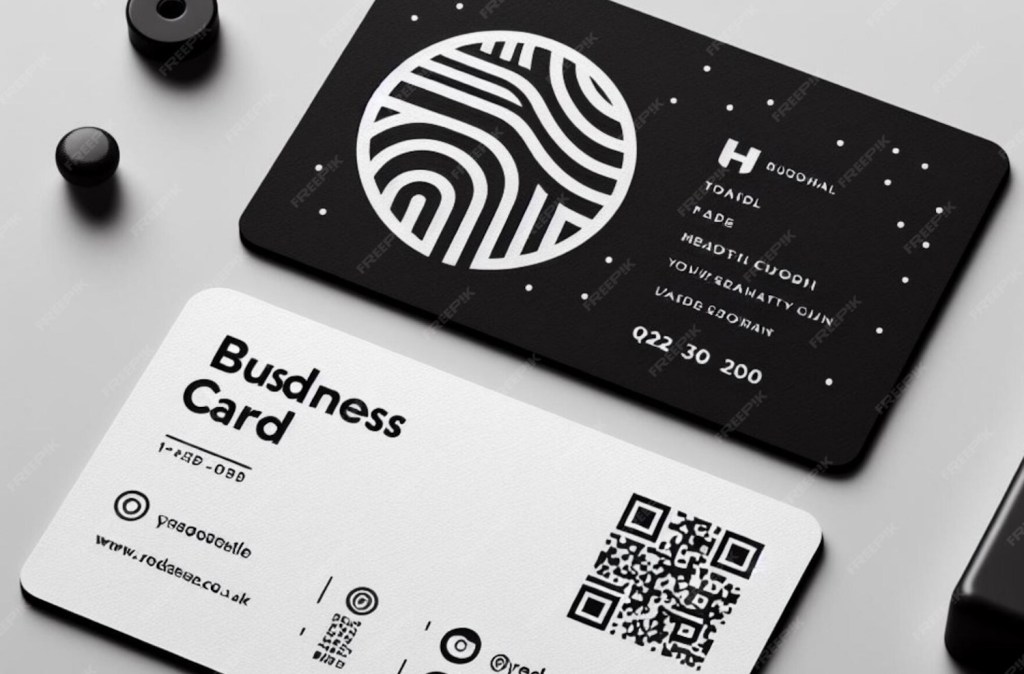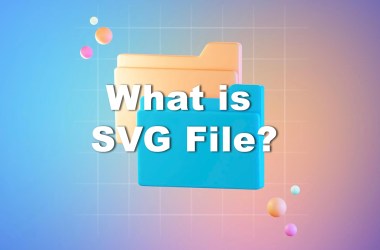Updated: Dec 05, 2024 By: Marios

A professional business card is something you should always keep close. You never know when you'll run into a potential client, business partner, or even an investor— especially when trying to grow your business.
But, yearly, around 10 billion business cards are printed in the U.S., and a staggering 8 billion of them are tossed into the trash, according to Credit Donkey. That’s a lot of waste—both financially and environmentally. Spending money on something that’s likely to be discarded is also discouraging.
On the bright side, digital business cards offer a convenient alternative, helping you network easily without the hassle and waste of traditional cards. In this article, we’ll explore why they are a better choice and how to create digital business cards in a few simple steps.
But first…
What is a Digital Business Card?
A digital business card is an electronic version of the traditional paper business card. It often contains your professional contact information and can easily be shared with your intended network.
The digital business card typically exists as a web page or downloadable file that can also include links to your social media profiles, website, and any other online customer touchpoints you’d want people to visit.
Here’s an example:
Unlike paper cards, virtual business cards are quite interactive. For instance, when someone scans a QR code, taps their phone against an NFC-enabled card, or clicks the card URL, they can instantly access your contact information.
What are the Benefits of Using a Digital Business Card?
Electronic business cards have grown in popularity thanks to their convenience. Imagine attending a busy networking event, and instead of carrying stacks of printed cards, you have all your contact information ready to share in a quick, hassle-free way. That alone is enough reason to use a virtual business card.
But, in case you need a stronger conviction, here are some key benefits of digital business cards to keep in mind:
- Insightful Analytics
One of the most significant downsides of physical business cards is that you have no way of knowing how potential clients interact with them. You can’t tell how many people have actually saved your contacts. Neither can you tell where or when people interact with the cards.
This is not a problem with digital business cards. Virtual business cards help you track how users interact with your cards. You can tell where and when they scanned your cards. You can also track how many times guys scanned and saved your contacts. It’s even possible to see the devices, specific location, and time of day when people scan and save your contacts.
This data is essential in tracking your lead generation efforts. You can tell what business cards are performing the best, for example. And if you have a team on the ground, you can easily tell whose card gets the most engagements.
- Cost-effectiveness
Virtual business cards are perfect if you want a budget-friendly way to grow your network. This is because digital cards do not incur printing and distribution costs, which are quite common with traditional paper cards.
Also, in cases where there’s a change, say in your company address, your physical card becomes obsolete, and all the money you spent goes to waste. But that’s not the case with a digital card. Depending on your chosen platform, you can spend as little as $48 per team member yearly on creating one for your team. This can save you up to 75% on your business card expenses.
- Excellent Networking and Branding Tool
Digital cards allow you to personalize according to your preferences. There are no constraints like printing considerations that may hinder you.
Also, you can add dynamic elements like videos, buttons, images, etc., to your business card landing page. Even better, you can add your logos, color scheme, and other brand elements to make your card a more effective marketing and networking tool.
- Instantly Shareable
E-business cards are also easy to share and allow people to get real-time access to your contact information. For instance, you can use creative QR code ideas like displaying QR codes on a large screen during an event, including them in your email signature, or even adding them to your social media profiles so people can quickly connect with you.
Digital business cards also allow for two-way contact sharing— that is, the same card you share can collect their contact details, making networking even more effective.
- Easily Updated and Edited
DBCs are also great because you can easily update and edit the content on your card landing page. This is helpful when you need to correct an error or if there’s some new information you want to share with your network.
- Integrates with CRMs and Other Software
DBCs have a smooth integration with CRM (customer relationship management) platforms like Salesforce or Zoho, HR tools, calendars, and other software platforms. This makes it easy to import client data, follow up with leads, and boost productivity over time.
For instance, you can connect your card with your email automation tool and automatically send emails to leads who share their contact information through your digital business card.
Plus, you also have access to an analytics dashboard with tools for tracking how your networking/ lead generation efforts are performing.
Use Cases of a Digital Business Card
Now, let’s see how your digital business cards can be used.
1. App-Based
An app-based digital business card lets you create and manage your contact information via a mobile application. These apps give you access to a rich toolkit containing resources like a virtual background, brand kit, automated email signatures, and link sharing. These tools contribute to making your business card stand out.
Once you download the digital business card app, you can easily set up your card and generate a QR code, which you’ll share whenever you’re networking.
App-based virtual cards are perfect for networking in various scenarios— virtual events or webinars, conferences, and other professional settings.
2. Digital Wallet
You can store your digital business card in a digital wallet like Apple Wallet or Google Wallet, for instance. This way, you still have them handy even when you don’t have access to the internet or have a weak connection.
Also, people can easily add your e-business card to their digital wallets when you share with them.
3. NFC (Near field communication) Integration
NFC-integrated cards combine physical and digital capabilities. You only need to tap your card again against a smartphone to share your contact information.
NFC integration enhances your traditional business card by giving it a more modern feel. It’s still cost-effective because you don’t need to print thousands of cards— one or two NFC cards will be enough to fetch a strong network of prospects.
4 Easy Steps to Create a Digital Business Card
Creating your digital business card is a straightforward process. So here’s an easy-to-follow guide on how to create digital business cards for your networking and lead-generation efforts.
1. Choose a Provider and Sign up
Choose a digital business card provider that suits your style and requirements. Start by researching a few options and make sure the provider offers all the essential features app of a modern business card.
For example, Uniqode’s digital business cards let you add social media links and save your cards on both Apple Wallet and Google Wallet. The cards also support two-way contact sharing and you’ll get scan data to track the performance of your cards.
Besides the features app, read through reviews to see what other users say about the provider. Check sites like Get Apps, Capterra, or Trust Pilot. Prioritize factors like ease of use, design options, and accessibility across devices.
When you've found a digital business card solution that appeals to you, download the app or visit their website. Then, follow the prompts to create an account and set up your profile.
2. Fill Out Your Basic Information
After creating your account, go to the “Create Business Card” option. You'll be prompted to enter essential details like your name, job title, company name, and email address— just like the example below:
You can also include your website, social media links, or anything else you wish to share.
Be sure to double-check for any typos or errors, especially in your contact information, as these are key details that people will use to connect with you.
3. Choose a Design and Customize
Personalize your digital business card by choosing a design that reflects your style or brand.
Use colors, fonts, and layouts that align with your brand guidelines, especially because you want to maintain consistency across various channels. You’ll most likely find a variety of templates at your disposal, so it's okay to experiment and tweak the designs until you get what matches your preference.
Once you're happy with the look of your card, move on to generating your QR code. Test the QR code to ensure it’s scannable and confirm it links correctly to your digital business card.
4. Start Sharing
Now that your digital business card is live, you can share it across multiple channels and continue to grow your network. Share the card link to your social media profile, use your QR code, or add it to your e-wallets.
Also, feel free to use the digital card at events. If you want to go even further, you can add your QR code to your physical products or other materials you wish to give out.
Conclusion
Digital business cards are a practical tool that makes networking easier and more effective. A smart business card can help you make a strong impression, connect with your network, and attract potential clients. With versatile options like QR codes, NFC technology, and links, these cards are easy to share across digital and physical spaces.
Also, compared to traditional business cards, digital cards are generally more affordable and offer you more flexibility.
Creating a digital business card is simple— choose an ideal platform, create your accounts, add your contact information, generate a QR code or link, and share it wherever you go.



